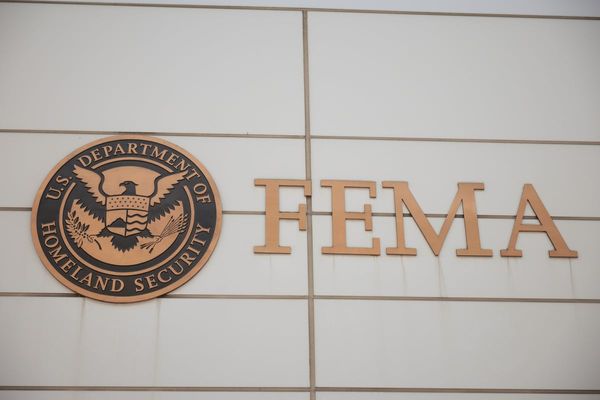
Buying a home is one of the biggest investments most people ever make. That’s why a thorough home inspection feels like a safety net—until it isn’t. Even the most diligent home inspectors can overlook hidden problems that later explode into expensive, stressful disasters for homeowners. These missed issues can lead to thousands in repairs, health hazards, and even legal battles. Understanding what inspectors commonly miss—and why—can help you protect your investment and avoid sleepless nights.
Many buyers assume a clean inspection report means a home is problem-free. Some of the most damaging issues lurk out of sight, masked by cosmetic fixes or inaccessible areas. Knowing what to watch for empowers you to ask the right questions, request specialized inspections, and make smarter decisions before closing the deal. Here are six critical issues home inspectors can miss that can cause catastrophic problems for homeowners.
1. Faulty or Outdated Electrical Wiring
Electrical problems are a leading cause of house fires, with over 24,000 residential electrical fires reported annually in the U.S. alone. Home inspectors often check visible outlets and breaker panels, but can’t see inside walls or behind finished surfaces. Older homes, especially those built before 1970, may have aluminum wiring or knob-and-tube systems that are now considered fire hazards.
A missed wiring issue can result in power outages, appliance damage, or even a devastating fire. For example, a family in Ohio faced $150,000 in damages after a hidden wiring fault sparked a blaze just months after moving in. If you’re buying an older home, consider hiring a licensed electrician for a more invasive inspection. Look for signs like flickering lights, warm outlets, or frequent breaker trips—these can signal deeper problems.
2. Hidden Water Damage and Mold
Water damage is notorious for hiding behind walls, under floors, or in attics. Mold can start growing within 24-48 hours of a leak, and it’s often invisible during a standard inspection. The Environmental Protection Agency estimates that 21% of U.S. homes have water damage that leads to mold growth, which can cause respiratory issues and costly remediation.
A missed leak can rot structural beams, destroy drywall, and create a breeding ground for toxic mold. One homeowner in Texas discovered a slow roof leak that had caused $40,000 in repairs after black mold had spread through the attic. Ask for moisture meter readings and thermal imaging scans to protect yourself, especially in basements and around windows. Pay attention to musty odors or recent paint jobs that could be covering up water stains.
3. Foundation and Structural Problems
Foundation issues are among the most expensive problems a homeowner can face, with average repair costs ranging from $4,000 to $25,000. Inspectors may miss subtle signs of shifting or settling, especially if landscaping or finished basements hide cracks. Soil movement, poor drainage, and tree roots can damage the foundation over time.
A missed foundation problem can lead to uneven floors, stuck doors, and structural failure. In one case, a couple in California had to vacate their home after a missed foundation crack widened, causing walls to separate and floors to buckle. Look for diagonal cracks above doors, sloping floors, or gaps around windows. If you notice any of these, consult a structural engineer before finalizing your purchase.
4. Inadequate Attic Insulation and Ventilation
Poor attic insulation and ventilation can lead to skyrocketing energy bills, ice dams, and even roof failure. The U.S. Department of Energy reports that 90% of homes are under-insulated, costing homeowners an average of $200 extra per year in heating and cooling. Inspectors may only visually check for missing gaps in insulation or blocked vents.
A poorly insulated attic can cause moisture buildup, leading to mold and wood rot. In colder climates, inadequate ventilation can create ice dams that damage shingles and gutters. One Minnesota homeowner faced $12,000 in repairs after ice dams caused water to leak into the living room. Ask your inspector to measure insulation depth and check for proper airflow. Upgrading insulation is a cost-effective way to prevent future headaches.
5. Sewer Line and Septic System Failures
Sewer and septic problems are often invisible during a standard inspection, yet a single failure can cost $10,000 or more to fix. Tree roots, aging pipes, and shifting soil can all cause blockages or leaks. Most inspectors only check visible plumbing and may not run a camera through the main sewer line.
A missed sewer issue can result in raw sewage backing up into your home, causing health hazards and extensive damage. In Maryland, a family had to move out for weeks after a hidden sewer line collapse flooded their basement. Request a sewer scope inspection if the home is older or has large trees nearby. Watch for slow drains, gurgling toilets, or soggy patches in the yard.
6. Pest Infestations in Hidden Spaces
Termites, carpenter ants, and rodents can cause catastrophic structural damage before you ever see a sign. Termites alone cause over $5 billion in property damage each year in the U.S. Standard inspections may miss infestations hidden in crawl spaces, behind walls, or in attics.
A missed pest problem can lead to weakened beams, ruined insulation, and expensive extermination bills. One Georgia homeowner discovered $30,000 in termite damage after buying a home with a “clean” inspection report. Invest in a separate pest inspection if you’re in a high-risk area. Look for mud tubes, wood dust, or droppings in hidden areas.
Protecting Your Investment: What Every Homebuyer Should Do
Home inspections are a crucial step, but they’re not foolproof. The primary keyword, home inspectors, is central to understanding both the process’s value and limitations. Even the best home inspectors can miss issues that lead to catastrophic consequences for homeowners.
To safeguard your investment, go beyond the standard inspection. Ask targeted questions, request specialized inspections for electrical, sewer, and pest issues, and don’t ignore warning signs like musty smells or uneven floors. Remember, a little extra diligence now can save you from financial and emotional turmoil later.
Have you ever faced a hidden home issue after moving in? Share your story in the comments—your experience could help others avoid the same fate.
Read More
What You Should Know About Audits
The post 6 Issues Home Inspectors Can Miss That Cause Catastrophic Issues For Homeowners appeared first on Clever Dude Personal Finance & Money.







